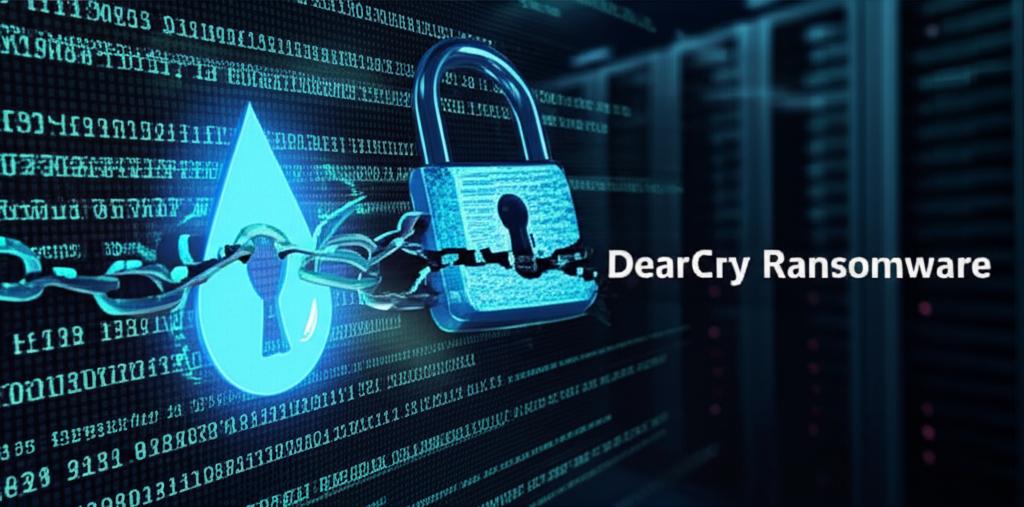DearCry Ransomware: Understanding, Prevention, and Impact
In the evolving landscape of cyber threats, ransomware continues to be a formidable adversary for organizations worldwide. Among the many strains that have caused significant disruption, DearCry ransomware emerged rapidly in early 2021, closely following the widespread exploitation of critical vulnerabilities in Microsoft Exchange servers. This sudden appearance and aggressive spread caught many off guard, underscoring the interconnectedness of system vulnerabilities and the swift deployment of malicious payloads by threat actors.
The Emergence: Exploiting Microsoft Exchange Vulnerabilities
DearCry’s notoriety is inextricably linked to the ‘ProxyLogon’ vulnerabilities (CVE-2021-26855, CVE-2021-26857, CVE-2021-26858, and CVE-2021-27065) in on-premises Microsoft Exchange Servers. These flaws, initially exploited by the state-sponsored Hafnium group, allowed attackers to gain unauthorized access to email servers without needing valid credentials. Once access was established, a web shell could be deployed, providing a persistent backdoor for further operations.
“The speed at which DearCry followed the Exchange vulnerabilities highlighted a critical challenge: the race between patching and exploitation. Organizations that delayed applying security updates found themselves at severe risk.”
It was in this highly vulnerable environment that DearCry began to appear. Threat actors, leveraging the pre-existing access gained through the Exchange exploits, were able to deploy DearCry as a final stage of their attack chain, encrypting critical data and demanding ransom.
Technical Characteristics and Modus Operandi
While DearCry shared similarities with other ransomware, it also exhibited distinct characteristics:
- Encryption Algorithm: It typically employed a combination of AES-256 for file encryption and RSA-2048 to secure the AES encryption key, making file recovery without the decryption key virtually impossible.
- File Renaming: Encrypted files would often have a specific extension appended, such as
.CRYPT, making it immediately clear which files were compromised. - Ransom Note: A ransom note, usually a
readme.txtfile, would be dropped in affected directories, detailing instructions on how to pay the ransom (typically in Bitcoin) to receive the decryption key. - Targeted Files: DearCry was designed to target a wide range of file types critical to business operations, including documents, databases, backups, and more.
- Simplicity: Compared to more sophisticated ransomware strains, DearCry was relatively straightforward in its implementation, yet highly effective given the pre-compromised state of the target systems.
- Service Termination: It often attempted to terminate various services and processes to ensure that files could be encrypted without interference.
Impact and Targeted Organizations
DearCry ransomware attacks affected a diverse range of organizations globally, primarily those that had not yet patched their on-premises Microsoft Exchange Servers. The impact was significant, leading to:
- Operational Disruption: Encrypted data brought business operations to a standstill, affecting critical services and productivity.
- Data Loss: For organizations without robust, isolated backups, the attacks resulted in permanent data loss.
- Financial Costs: Ransoms, recovery efforts, forensic investigations, and reputational damage incurred substantial financial burdens.
Prevention and Mitigation Strategies
Protecting against DearCry and similar ransomware threats requires a multi-layered, proactive cybersecurity approach:
- Patch Management: Prioritize and apply security updates for all systems, especially critical infrastructure like email servers, operating systems, and network devices.
- Robust Backup Strategy: Implement a 3-2-1 backup rule (3 copies of data, on 2 different media, with 1 copy off-site and offline/air-gapped). Regularly test backup restoration.
- Network Segmentation: Divide your network into isolated segments to limit the lateral movement of ransomware if an initial breach occurs.
- Endpoint Detection and Response (EDR): Deploy advanced EDR solutions to monitor endpoints for malicious activity and respond quickly to threats.
- Strong Authentication: Enforce multi-factor authentication (MFA) for all accounts, particularly for privileged access and remote access services.
- Employee Training: Educate employees on phishing, social engineering tactics, and safe computing practices to prevent initial compromise.
- Incident Response Plan: Develop and regularly test a comprehensive incident response plan to ensure a swift and effective reaction to a ransomware attack.
- Vulnerability Management: Conduct regular vulnerability scanning and penetration testing to identify and remediate weaknesses before attackers can exploit them.
Conclusion
The DearCry ransomware saga serves as a stark reminder of the critical importance of timely patching, robust cybersecurity defenses, and a proactive posture against emerging threats. Its rapid deployment following the Microsoft Exchange vulnerabilities highlighted how quickly threat actors can weaponize newly disclosed exploits. By adopting comprehensive prevention strategies and maintaining vigilant security practices, organizations can significantly reduce their risk of falling victim to ransomware attacks and protect their valuable data and operations.







